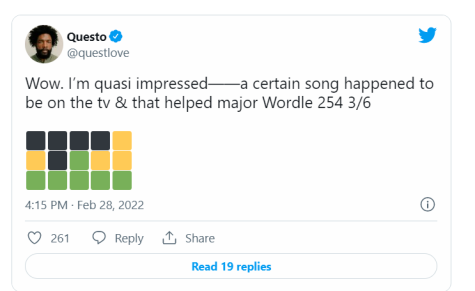Unpacking The Wordle Phenomenon
Stephanie Ahn ’24 unboxes the story behind the 6×5 grid that took the world by storm.

Puzzles, such as Sudoku, Solitaire, or 2048, have always been a staple, especially on Mitty iPads, but recently Wordle has taken the entire Internet by storm. Developed in 2013 and released in October of 2021, Wordle has undoubtedly become a cultural phenomenon given its immense popularity and success—and the reason is quite clear.
With six tries to guess a five-letter word, Wordle is a daily puzzle that makes millions rack their brains. Even though the developer Josh Wardle sold it to the New York Times, the layout of the website hasn’t changed. The website suggests Wardle is a minimalist—just a plain black background and a 6×5 grid. There are no advertisements or other pop-ups on the side, unlike websites like Tetris. It’s just very simple. And that’s exactly how Wardle intended it to be. It turns out the origins of Wordle were meant to be a gift for his partner, not a money-maker. Its simplicity appeals to so many—thus why the game has made its way into so many people’s daily routines. Its virality has even overrun classrooms. @miss_hunter on TikTok posts videos of her and her fourth-grade students playing the Wordle together every day, racking up thousands of views and likes.
It’s become so widespread that many are able to recognize the basic black, yellow, and green boxes posted on social media sites such as Twitter as people posting their Wordle scores. The game is able to make use of the seemingly useless colored-block emojis, allowing people to share their scores without giving the answer away. Another interesting featu re that contributes to Wordle’s uniqueness is that it resets every day at midnight; players aren’t able to binge then fall off the game; instead, they find it more enjoyable to play it in moderation. So, is it really surprising that the New York Times reports an estimated 300,000 Wordle players each day?
re that contributes to Wordle’s uniqueness is that it resets every day at midnight; players aren’t able to binge then fall off the game; instead, they find it more enjoyable to play it in moderation. So, is it really surprising that the New York Times reports an estimated 300,000 Wordle players each day?
Wordle’s impact has been huge, considering there are several different versions of the game inspired by the original: Worldle, Octordle, Nerdle, Quordle, Heardle and more. It even extends to ones for different fandoms; take a look at Lordle of the Rings for Lord of the Rings fans or Taylordle for Swifties. These fan-made renditions of Wordle show how much people genuinely enjoy this simple word game. Word puzzles may seem old-fashioned, but the existence and thriving rule of Wordle proves that small, daily games like this still hold their sway over the public just as they did in American newspapers over fifty years ago. So while I would tell you to check out the game, I’m willing to bet you probably already have.

